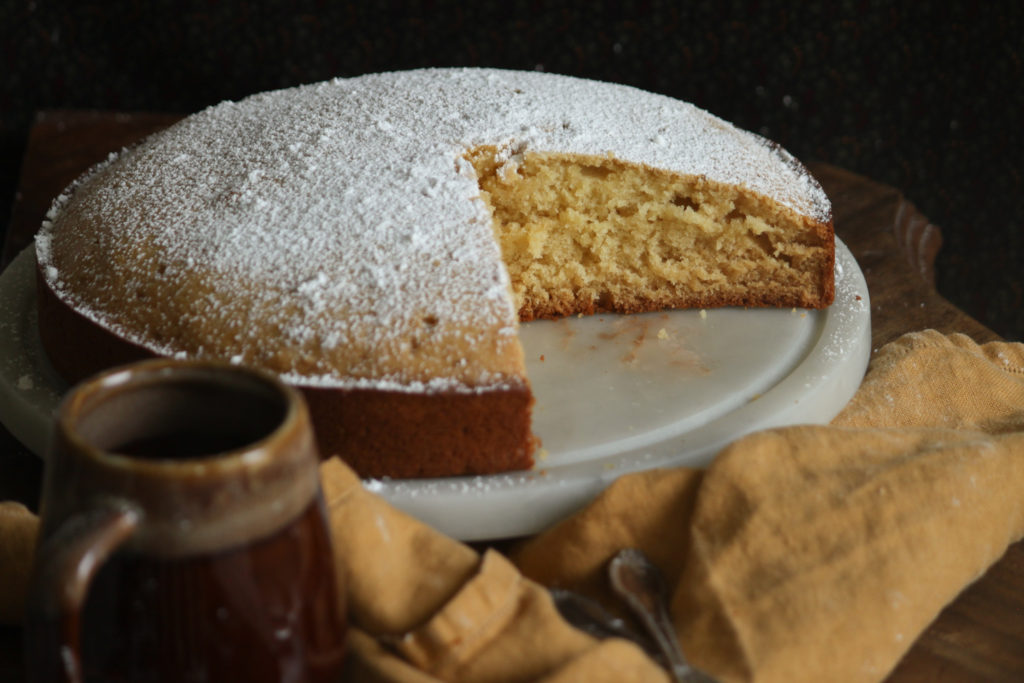
History
St. Bartholomew has long been associated with beekeeping and honey. It was even a longstanding tradition that the honey crop harvest in England and the rest of Europe was to coincide with his day: August 24th.
Over time this connection to honey and bees also caused St. Bartholomew’s Day to be associated with mead or honey wine. Up until the 1950s there was even a “Blessing of the Mead” ceremony linked to the saint on August 24th in the village of Gulval in Cornwall. Similarly, the annual St. Bartholomew’s Fair in London was famous for its honey-coated apples and other honey treats.
It is assumed that one of the reasons why St. Bartholomew’s Day stayed so strongly connected to the image of honey throughout the ages was that the monks of the Christian faith were known for their skill at beekeeping. Among the many ways the monks used the honey that they harvested in the life of the Church, they utilized it to 1) make herbal medicines more palatable, 2) provide candles for the church, and 3) produce wine for communion.
We may not be nearly as skilled as the ancient monks were in their use of this delicious product; nevertheless, we have put together a honey cake recipe to help you and your household celebrate St. Bartholomew much like they did.
St. Bartholomew’s Day Honey Cake
Honey cake is a popular historic dessert that can be traced back to ancient Egypt, Rome, and the Middle East. Over time, this delicacy made its way up from the Mediterranean to Western and Central Europe, becoming an especially popular dessert in medieval Christian communities during festival celebrations. Although the ways in which honey cake is made have evolved drastically over the ages, there are a few characteristics that have never changed. First, the cake is never frosted. Second, the cake is always intended to highlight the natural flavor of the honey. Each cake is unique because of the fact that honey can differ significantly in taste depending on the region where it is harvested.
One thing that we love about this no-frills treat is that it is naturally sweetened and made with very basic ingredients. However, one thing you can do to make this recipe really stand out is seek out high-quality honey! Nowadays bakers often use standard clover honey when making their creations because of its mild flavor. Instead, we suggest finding a locally grown wildflower honey to use in this particular recipe; it will really help give your cake a distinct flavor. Don’t forget to serve it warm with a cup of tea or coffee!

St. Bartholomew’s Day Honey Cake Recipe
Ingredients:
2 cups all-purpose flour
½ teaspoon salt
½ teaspoon baking soda
½ cup (1 stick) butter
1 cup honey
3 eggs
¼ teaspoon almond or vanilla extract
½ cup sour cream or plain yogurt
powdered sugar, for dusting
Instructions:
- Preheat the oven to 350 degrees. Grease and flour a 9” round cake pan.
- In a large bowl, whisk together flour, salt, and baking soda.
- Using a stand mixer, beat together the butter and honey until the mixture is creamy and smooth. Add the eggs and beat well. Then add the almond or vanilla extract.
- Next, add the dry ingredients to the mixing bowl and beat the mixture until just barely combined.
- Finally, fold in the sour cream or yogurt.
- Pour the batter into the prepared cake pan and bake until a toothpick inserted in the middle comes out clean, about 35 minutes.
- Serve the cake with a dusting of powdered sugar!

St. Bartholomew Honey Cake
Ingredients
- 2 C all-purpose flour
- ½ tsp salt
- ½ tsp baking soda
- ½ C (1 stick) butter
- 1 C honey
- 3 eggs
- ¼ tsp almond or vanilla extract
- ½ C sour cream or plain yogurt
- powdered sugar for dusting
Instructions
- Preheat the oven to 350 degrees. Grease and flour a 9” round cake pan.
- In a large bowl, whisk together flour, salt, and baking soda.
- Using a stand mixer, beat together the butter and honey until the mixture is creamy and smooth. Add the eggs and beat well. Then add the almond or vanilla extract.
- Next, add the dry ingredients to the mixing bowl and beat the mixture until just barely combined.
- Finally, fold in the sour cream or yogurt.
- Pour the batter into the prepared cake pan and bake until a toothpick inserted in the middle comes out clean, about 35 minutes.
- Serve the cake with a dusting of powdered sugar!


This tastes amazing! It was our first foray into liturgical baking. 🙂 You all should publish these in a book! Thanks for all your work on this.
Thank you so much, Olivia! We’re glad you enjoyed it and blessed feast to you!